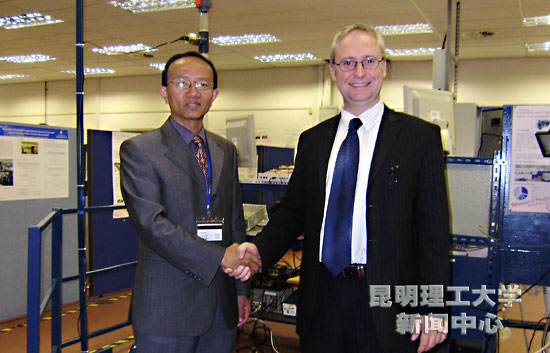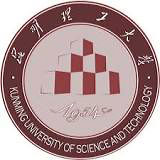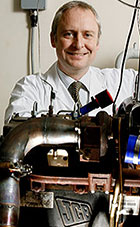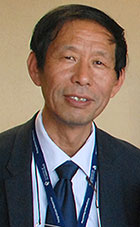Friction Stir Welding for Huddersfield and Kunming collaboration
 Pictured with the University of Huddersfield's Professor Andrew Ball (right) of the Centre for Efficiency and Performance Engineering is Professor Xiaocong He of Kunming University of Science and Technology’s (KUST) Innovative Manufacturing Research Centre.
Pictured with the University of Huddersfield's Professor Andrew Ball (right) of the Centre for Efficiency and Performance Engineering is Professor Xiaocong He of Kunming University of Science and Technology’s (KUST) Innovative Manufacturing Research Centre.
Thu, 25 Sep 2014 14:50:00 BST
Researchers in the Centre for Efficiency and Performance Engineering unite with Kunming University of Science and Technology for new work on friction stir welding
 RESEARCHERS at the University of Huddersfield have collaborated with a colleague at a leading Chinese university to produce a detailed appraisal of a complex new welding technique that could be increasingly valuable to modern industry.
RESEARCHERS at the University of Huddersfield have collaborated with a colleague at a leading Chinese university to produce a detailed appraisal of a complex new welding technique that could be increasingly valuable to modern industry.
Professor Andrew Ball (pictured below) and his colleague Dr Fengshou Gu, of the University of Huddersfield’s Centre for Efficiency and Performance Engineering, teamed up with Professor Xiaocong He of Kunming University of Science and Technology’s (KUST) Innovative Manufacturing Research Centre in order to investigate the technique known as Friction Stir Welding (FSW).
 “The University of Huddersfield and Kunming University of Science and Technology have worked very closely together for many years now, and this important publication is one example of the benefits of such international collaboration,” said Professor Ball.
“The University of Huddersfield and Kunming University of Science and Technology have worked very closely together for many years now, and this important publication is one example of the benefits of such international collaboration,” said Professor Ball.
Professor He is a Visiting Professor at the University of Huddersfield and makes regular visits. Professor Ball and Dr Gu reciprocate with visits to KUST, the next being planned for Spring 2015.
Further research
Friction Stir Welding is a technique invented in the UK in 1991 that has proved to be an effective means of joining materials that are otherwise hard to weld and for joining plates with different thicknesses or made from different materials. Advanced new technologies, such as FSW, are especially important in modern manufacturing, where there is an increasing need to design lightweight structures and to develop ways of joining them.
Professor He, Professor Ball (pictured left) and Dr Gu carried out the research into FSW over a period of several years, receiving financial backing from the National Natural Science Foundation of China and the Special Program of the Chinese Ministry of Science and Technology. They have now issued their findings in a 66-page article published by the leading international journal Progress in Materials Science.
 “Progress in Materials Science has an Impact Factor in excess of 25, which is very high for most fields, including engineering. I’m delighted that our work has been published in this prestigious and highly-weighted journal,” said Dr Gu (pictured right).
“Progress in Materials Science has an Impact Factor in excess of 25, which is very high for most fields, including engineering. I’m delighted that our work has been published in this prestigious and highly-weighted journal,” said Dr Gu (pictured right).
The article reviews the latest developments in the numerical analysis of friction stir welding processes, the microstructures of friction stir welded joints and the properties of friction stir welded structures.
The authors conclude that FSW can be used successfully to join difficult-to-weld materials, but that the technique and scientific understanding of it is still at an early stage in its development. “So far, the development of the FSW process for each new application has remained largely empirical. Scientific, knowledge-based numerical studies are of significant help in understanding the FSW process,” they write.
Many challenges remain in the development and analysis of FSW, they conclude, adding that the digest that they have presented in the Progress in Materials Science article is intended to provide the basis for further research.







